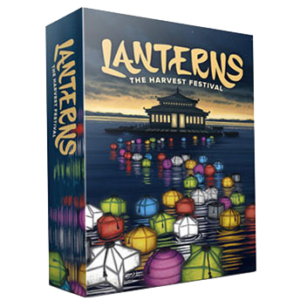 Playing games as my ministry makes for an interesting set of vocabulary. There is a surprising amount of overlap in both these spheres. I evangelize. I share the joy and wonder of what I have seen and experienced in order that others might have a chance to see it themselves. I’m an apologist, which means I try to make logical arguments that justify a belief that I hold. Proper application of both of these mean I am always looking for opportunities to introduce people to new games in a way that will engage them and show them that there is inherent value in the experience. This is particularly true when it comes to my wife. It’s rare that my wife will ever be the instigator of a play session. Our game time is either a favor to me or an evening where our more game-oriented friends come over to the house. So when a game has intrigued her to the point that she is actively asking to play almost every night – I took notice. Apparently, I was so busy trying to discover a game that would get her excited that I neglected to explore the reasons for playing. I needed a new angle – to shine a new light on the subject at hand. It came in the form of paper lanterns and cell phone screens.
Playing games as my ministry makes for an interesting set of vocabulary. There is a surprising amount of overlap in both these spheres. I evangelize. I share the joy and wonder of what I have seen and experienced in order that others might have a chance to see it themselves. I’m an apologist, which means I try to make logical arguments that justify a belief that I hold. Proper application of both of these mean I am always looking for opportunities to introduce people to new games in a way that will engage them and show them that there is inherent value in the experience. This is particularly true when it comes to my wife. It’s rare that my wife will ever be the instigator of a play session. Our game time is either a favor to me or an evening where our more game-oriented friends come over to the house. So when a game has intrigued her to the point that she is actively asking to play almost every night – I took notice. Apparently, I was so busy trying to discover a game that would get her excited that I neglected to explore the reasons for playing. I needed a new angle – to shine a new light on the subject at hand. It came in the form of paper lanterns and cell phone screens.
My wife recently made a trip to the ER with intense pain. While the pain eventually tapered off, between the medications and the long nights, she was left drained. She wanted to thank me for taking care of her during the whole ordeal, so she declared a gaming date night was in our future. We’d have dinner together and then play games – my favorite way to spend an evening. However, after we were done eating, I could tell she was dragging. Shoulders slumped and eyelids heavy, she said, “I’m sorry. I’m just too tired. If only there was a way we could play games in bed.”
 When I told her that I had a number of board game apps on my phone, she perked up. The idea of both being able to lie down in bed and play a game was welcome news. I ran down the list of games I had, and it was Lanterns: The Harvest Festival that caught her attention. We’d actually played the physical game before. A friend had brought it to a game night, and Suze had enjoyed it. She was already on her way up the stairs when I told her that the digital version plays exactly the same way.
When I told her that I had a number of board game apps on my phone, she perked up. The idea of both being able to lie down in bed and play a game was welcome news. I ran down the list of games I had, and it was Lanterns: The Harvest Festival that caught her attention. We’d actually played the physical game before. A friend had brought it to a game night, and Suze had enjoyed it. She was already on her way up the stairs when I told her that the digital version plays exactly the same way.
Lanterns is a deceptively strategic game for how light it is mechanically. Players receive three paper lantern tiles that have colored lanterns featured on each side of the tile. They play these to alongside any of the tiles in the display in the middle of the table. All players receive lanterns based on which color is facing them, with the active player receiving additional lanterns for each color they match to surrounding tiles. There are ways to exchange lanterns of one color for another – but knowing when to do so is not necessary to win. It’s more important to learn when to make dedications and score points. Dedications come in three types – four of a kind, three pairs, or one of each colored lantern in the game. Every time a player cashes in lanterns to make a dedication, they will receive the associated number of points. Future dedications of the same type are worth fewer points, so timing which dedication at what time is key. Play continues until all the lantern tiles have been placed in the display. Players will get one final chance to make a dedication – and whoever has the most points after that wins.
The digital version of the game renders all of that simplicity in a beautiful package. Instead of a table, players are hovering over the surface of the lake where the lantern festival was being celebrated. Koi fish gently swim past lilypads as soothing music plays in the background. When players add their tile to the display, they appear as lanterns that are dropped in with a gentle splash. Even dedications delicately ring like wind chimes as each lantern is turned in. It was everything we loved and more. As we lay in bed with the lights off, I loved how excited my wife’s face was in the light of the screen. Still on pain medication, she wouldn’t always make the best play. On more than one occasion she handed me victory by playing a tile in a way that would give me the lantern I needed to score. But every time she placed a tile with matching sides she was thrilled.
 I thought that when the pain, and with it the medication, was over – she wouldn’t want to continue with these pre-bedtime gaming sessions. She’d have her energy back, which she’d want to spend on other things. But after her first pain-free day was wrapping up, she leaned over to me and said, “You want to go up and play Lanterns with me? I’m pretty sure I can kick your butt at that game now.” I could hear the cheers of every gamer whose significant other has no love for the hobby in my head like a heavenly choir. She was in, and it wasn’t guilt, a favor, or humoring her nerdy husband as an outpouring of love. She wanted to play – and she wanted to beat me to a pulp in one of the most ‘zen’ games on the market today. It was everything I ever wanted.
I thought that when the pain, and with it the medication, was over – she wouldn’t want to continue with these pre-bedtime gaming sessions. She’d have her energy back, which she’d want to spend on other things. But after her first pain-free day was wrapping up, she leaned over to me and said, “You want to go up and play Lanterns with me? I’m pretty sure I can kick your butt at that game now.” I could hear the cheers of every gamer whose significant other has no love for the hobby in my head like a heavenly choir. She was in, and it wasn’t guilt, a favor, or humoring her nerdy husband as an outpouring of love. She wanted to play – and she wanted to beat me to a pulp in one of the most ‘zen’ games on the market today. It was everything I ever wanted.
Logically, I started picking up all the board game apps I could shove on my phone. I had figured it out. I had cracked the code. I could lead Suze to gaming like the pied piper of Android. Splendor was a natural choice – another game that she enjoyed at the table. I asked her if she wanted to play, but she didn’t bite. The math didn’t work in my head. Board games + ability to play in bed = win, right? But that wasn’t it at all. Even when she didn’t have a shot at beating me, she loved placing tiles with multiple matching sides. She loved when a chunk of the board matched – especially in purples and blues, her favorite colors. She could just lose herself in the beauty and the simple rules before going to bed. That was what made it worth doing.
Lanterns is a great game. The app version of it is a fantastic adaptation of that game. But my favorite part of this whole process was being reminded that everything isn’t a project. It isn’t the means to an end. Sometimes it’s just about making a beautiful display, and seeing my wife’s smile in its light.




